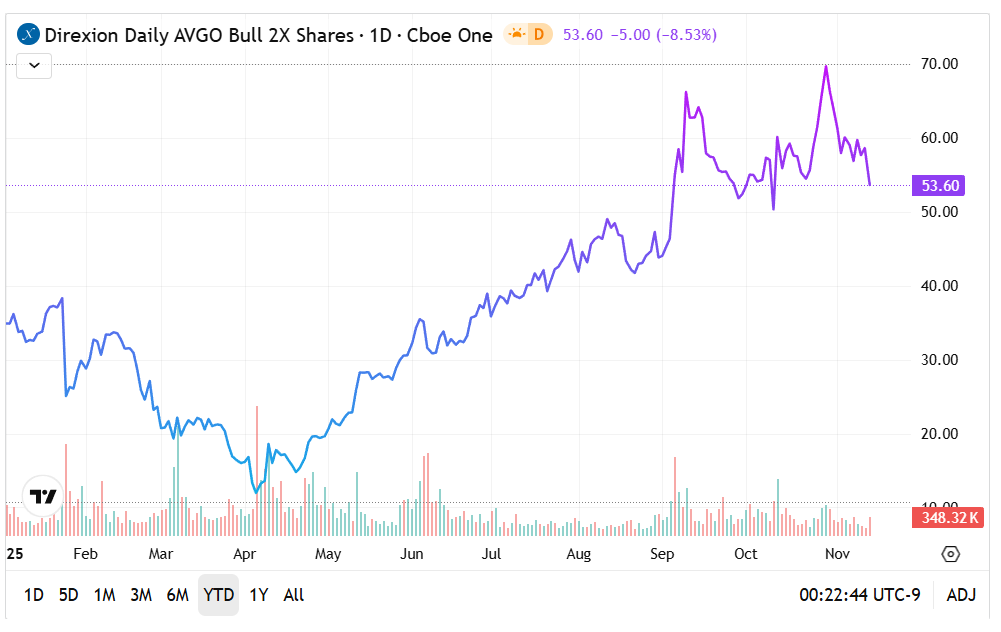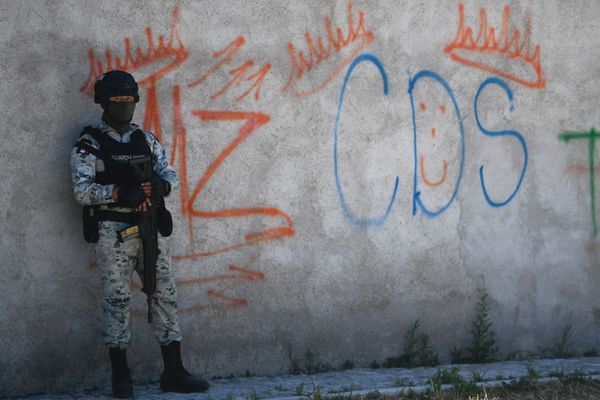
As one of the world's top designers, developers and manufacturers of semiconductor and infrastructure software products, Broadcom Inc (NASDAQ:AVGO) has naturally enjoyed a strong performance in the market. Since the beginning of this year, AVGO stock gained almost 47%, easily outpacing the Nasdaq Composite's run of 18.43% during the same period. However, even Broadcom wasn't immune to recent downside pressure.
To be fair, the overall volatility so far hasn't been terrible compared to other big names in the innovation space. In the past five sessions, AVGO stock dipped about 4%, which isn't necessarily catastrophic. However, investors will note that since closing at an all-time high on Oct. 29, the security dropped by nearly 12%. Other semiconductor firms, such as Intel Corp (NASDAQ:INTC), have incurred a similar magnitude of erosion.
Much of the problem can be tied to tech traders fleeing the hype earlier generated by artificial intelligence. On Thursday, sector heavyweights like Nvidia Corp. (NASDAQ:NVDA) and Alphabet Inc. (NASDAQ:GOOG) (NASDAQ:GOOGL) shaved hundreds of billions of dollars' worth of market capitalization. For its part, Broadcom alone erased about $90 billion of value before paring back some of the losses later in the day.
Some of the volatility can be tied to the political realm. Thanks to the ripple effect of the government shutdown, the Trump administration has decided not to publish the October Consumer Price Index and the U.S. jobs report. Economist Mohamed El-Erian disagreed with the move, insisting that such censorship could fuel conspiracy theories regarding the true state of the economy.
Of course, the bigger issue is that both the market and policymakers are flying blind without the critical gauges. Because of the lack of informational transparency, the Federal Reserve is in limbo regarding the prospect of a rate cut announcement at its December meeting. Subsequently, cryptocurrencies have tanked, contributing to overall skepticism toward risk-on entities.
At the same time, AVGO stock is now trading at a more attractive valuation (though that's a relative concept). For example, the security currently exchanges hands at 91.08 times trailing-year earnings. At the end of July, this multiple stood at more than 107.
It's possible, then, that some investors may view the fallout as a discounted opportunity.
The Direxion ETFs: What is certain is that proponents on both sides believe they have convincing arguments. With Broadcom providing rich grounds for speculative endeavors, financial services provider Direxion has brought to the table two countervailing exchange-traded funds.
For the optimists, the Direxion Daily AVGO Bull 2X Shares (NASDAQ:AVL) seeks daily investment results of 200% of the performance of AVGO stock. On the other end, pessimistic traders may consider the Direxion Daily AVGO Bear 1X Shares (NASDAQ:AVS), which seeks 100% of the inverse performance of the namesake security.
Primarily, Direxion ETFs attract investor participation due to their flexibility. Usually, traders interested in more exotic strategies, such as leveraged or short positions, must engage the options market. However, financial derivatives carry complexities that may not be suitable for everyone. In contrast, Direxion ETFs can be bought and sold much like any other publicly traded security, thus mitigating the learning curve.
Nevertheless, traders participating in these funds must recognize their unique risks. First, leveraged and inverse ETFs typically incur greater volatility than standard funds tracking benchmark indices, such as the Nasdaq Composite index. Second, Direxion ETFs are designed for exposure lasting no longer than one day. Holding these funds longer than recommended may expose traders to value decay due to the daily compounding effect.
The AVL ETF: Since the start of the year, the AVL ETF has gained more than 54%, with the half-year period being particularly more robust at nearly 90% up.
- While AVL's price action has been raising the 50-day moving average higher, recent volatility has sent the fund below this threshold.
- Another point that's problematic is overall participation. Since September, volume levels have generally faded, which may suggest waning interest.

The AVS ETF: On the other end of the spectrum, the AVS ETF has lost 44% since the beginning of the year, with the half-year performance dipping more than 35%.
- In a flipped narrative to its bullish counterpart, the 50 DMA has imposed resistance to AVS' price action. However, a recent surge has witnessed its head poking above this threshold.
- Interestingly, while participation for AVS has been low in the past, acquisition volume has picked up recently, implying greater interest in the bearish trade.

Featured photo from Shutterstock







